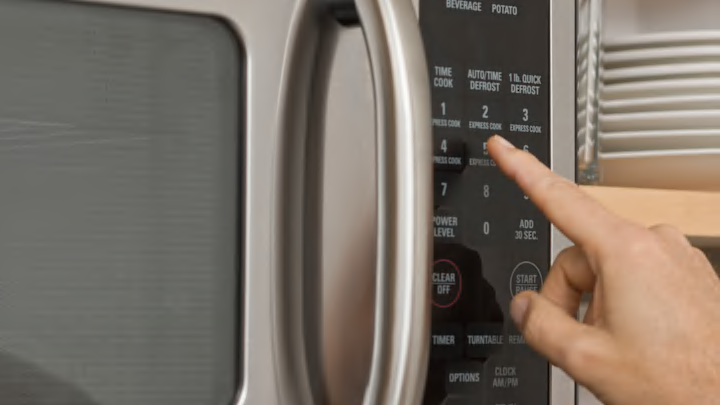No matter how often you use it, your microwave may inspire confusion. It’s probably the only appliance in your kitchen that turns aluminum foil into pyrotechnics, and that can produce food that’s both half-frozen and hot enough to leave scars. Even the design may have you scratching your head as you heat up your leftovers. If you’ve ever questioned the mesh pattern that appears on microwave doors, you should know it’s there for a good reason.
As Science Friday explains, the dark grating is there for your protection. Microwave ovens use electromagnetic radiation to heat food. Microwaves (as in the actual waves, not the appliance) are long compared to other forms of radiation like X-rays or gamma rays. They’re about 12 centimeters (4.7 inches) long, making them bigger than wavelengths of visible light.
The mesh of microwave oven doors is designed with this in mind. Microwaves can’t fit through the pin-prick holes, so they bounce off the door and back into the box. Light waves are small enough to penetrate the holes, which allows you to watch your food as it’s being cooked without exposing yourself to radiation.
This structure is called a Faraday cage (named after scientist Michael Faraday), and it does more than keep you safe—it allows the appliance to work properly. Microwaves heat food by frantically bouncing against the walls of the oven, including the mesh window. The randomness of the heat source is the reason your meal can come out scaldingly hot in some spots and cold in others.
Even if you don’t love the idea of a thin grate separating you from radiation exposure, you shouldn’t necessarily ditch your microwave. While they’re not something you want to absorb on a daily basis, microwaves pose a relatively minor threat compared to other forms of radiation. Because they’re longer, microwaves give off non-ionizing radiation, so they don’t inflict damage on a molecular level the way X-rays can. So even if small amounts of radiation do manage to escape your microwave oven, there’s no need to don protective gear before checking on your Hot Pocket.
